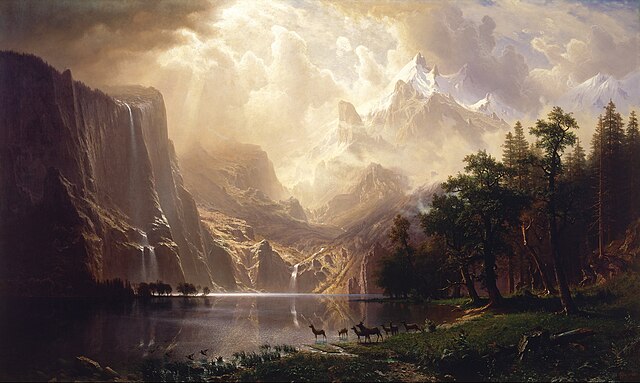Thomas Moran was an American painter and printmaker of the Hudson River School in New York whose work often featured the Rocky Mountains. Moran and his family, wife Mary Nimmo Moran and daughter Ruth took residence in New York where he obtained work as an artist. He was a younger brother of the noted marine artist Edward Moran, with whom he shared a studio. A talented illustrator and exquisite colorist, Thomas Moran was hired as an illustrator at Scribner's Monthly. During the late 1860s, he was appointed the chief illustrator for the magazine, a position that helped him launch his career as one of the premier painters of the American landscape, in particular, the American West.
Thomas Moran by Napoleon Sarony
Thomas Moran standing on a balcony, smoking a cigar, 1912
Grand Canyon of the Colorado River (1892–1908)
The Grand Canyon of the Yellowstone (1893–1901), Smithsonian American Art Museum
The Hudson River School was a mid-19th-century American art movement embodied by a group of landscape painters whose aesthetic vision was influenced by Romanticism. Early on, the paintings typically depicted the Hudson River Valley and the surrounding area, including the Catskill, Adirondack, and White Mountains.
Thomas Cole (1801–1848), The Oxbow, View from Mount Holyoke, Northampton, Massachusetts, after a Thunderstorm (1836), Metropolitan Museum of Art
Thomas Cole, A View of the Two Lakes and Mountain House, Catskill Mountains, Morning, 1844, Brooklyn Museum of Art
Frederic Edwin Church, Niagara Falls, 1857, Corcoran Gallery of Art, Washington, D.C.
Albert Bierstadt, Among the Sierra Nevada, California, 1868, Smithsonian American Art Museum, Washington, D.C.








